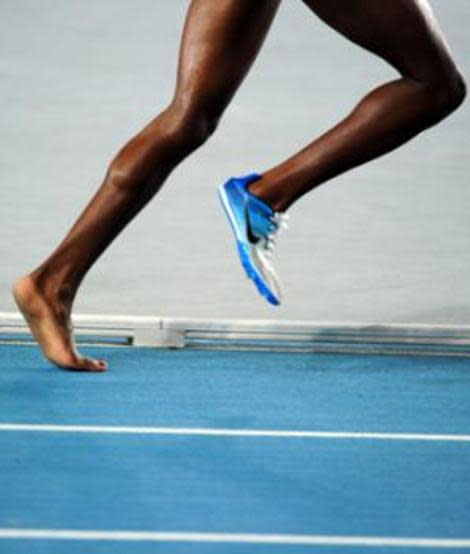Barefoot Running: Do the Benefits Outweigh the Risks?

By Charlotte Andersen
The first time I tried barefoot running I did everything wrong. Having missed my ride and only a 3-mile jog away from home, I figured it would be the perfect opportunity to try out this new barefoot trend I'd been hearing so much about. I slipped off my heels and took off homeward. It only took a few blocks to realize that the pavement was chewing up the bottoms of my feet. I tried running on the grass instead but it was too hard to see rocks and sticks, plus it quickly became clear that there's not a lot of grass in my neighborhood. Two miles in I was leaving a trail of blood and tears. Admitting defeat, I called my husband to come and get me and spent the next week nursing my feet back to walking condition.
Lesson learned: there's a lot more to barefoot running than just running in bare feet.
RELATED: 8 Ways to Stay Warm on Winter Runs
More recently, I've tried barefoot running the way the experts advise: start out slow, build your foot strength, run indoors at first, and use a "barefoot shoe." The last part took the most getting used to. (While having my toes individually encased no longer feels foreign, I've never gotten used to looking like I have gorilla feet.)
I truly enjoy working out barefoot--kickboxing, sprinting, lifting weights, and of course yoga all lend themselves well to naked feet. But I still haven't mastered long-distance running without my cushioned sneaks. And I'm not the only one whining. Runners of all stripes are reporting increased injuries (more often due to modern hazards like broken sidewalks than the minimal shoes themselves), blisters, and cuts, and an impossible-to-clean stinky shoe. Are all the sacrifices that barefoot runners make worth the pain?
According to new Harvard research, the answers aren't clear-cut. While previous research shows a decrease in foot and ankle injuries in barefoot/minimalist runners (who avoid stepping in potholes and the like), the first new study shows it may depend more on how you run than what you run in. Heel-strikers, regardless of shoe, sustain nearly twice as many injuries than mid- or fore-foot runners. However, the second new study from Harvard (they love their running!) shows that barefoot/minimalist runners have significantly better economy when running, which means they use less energy and are more efficient than traditional runners.
RELATED: Extreme Fitness Challenges for 2012
What do you think: Are the benefits of minimalist shoes worth the risks? Leave a comment below and share your opinion!
More on SHAPE:
10 Tricks to Get Motivated to Hit the Gym
8 Reasons to Lift Heavier Weights
20 Tips to Get Toned, Tight Abs Faster
